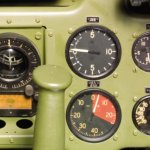Hi all,
after a longer time, my interest recently shifted back to the PTO again, and by comparing B24Guy's and Akemi's A6M2 I noticed that the "default" Zero is more agile than Akemi's.
Obviously, there is also a airfile modification from AF=Midway Project adding more flap lift to the "default" Zero.
I mean it's just a game and as always, it's at least question of personal taste, and FDE file can easily be exchanged, but I wondered which one would be nearer to the real one?
Has anyone an idea?
br
Norbert
after a longer time, my interest recently shifted back to the PTO again, and by comparing B24Guy's and Akemi's A6M2 I noticed that the "default" Zero is more agile than Akemi's.
Obviously, there is also a airfile modification from AF=Midway Project adding more flap lift to the "default" Zero.
I mean it's just a game and as always, it's at least question of personal taste, and FDE file can easily be exchanged, but I wondered which one would be nearer to the real one?
Has anyone an idea?
br
Norbert

